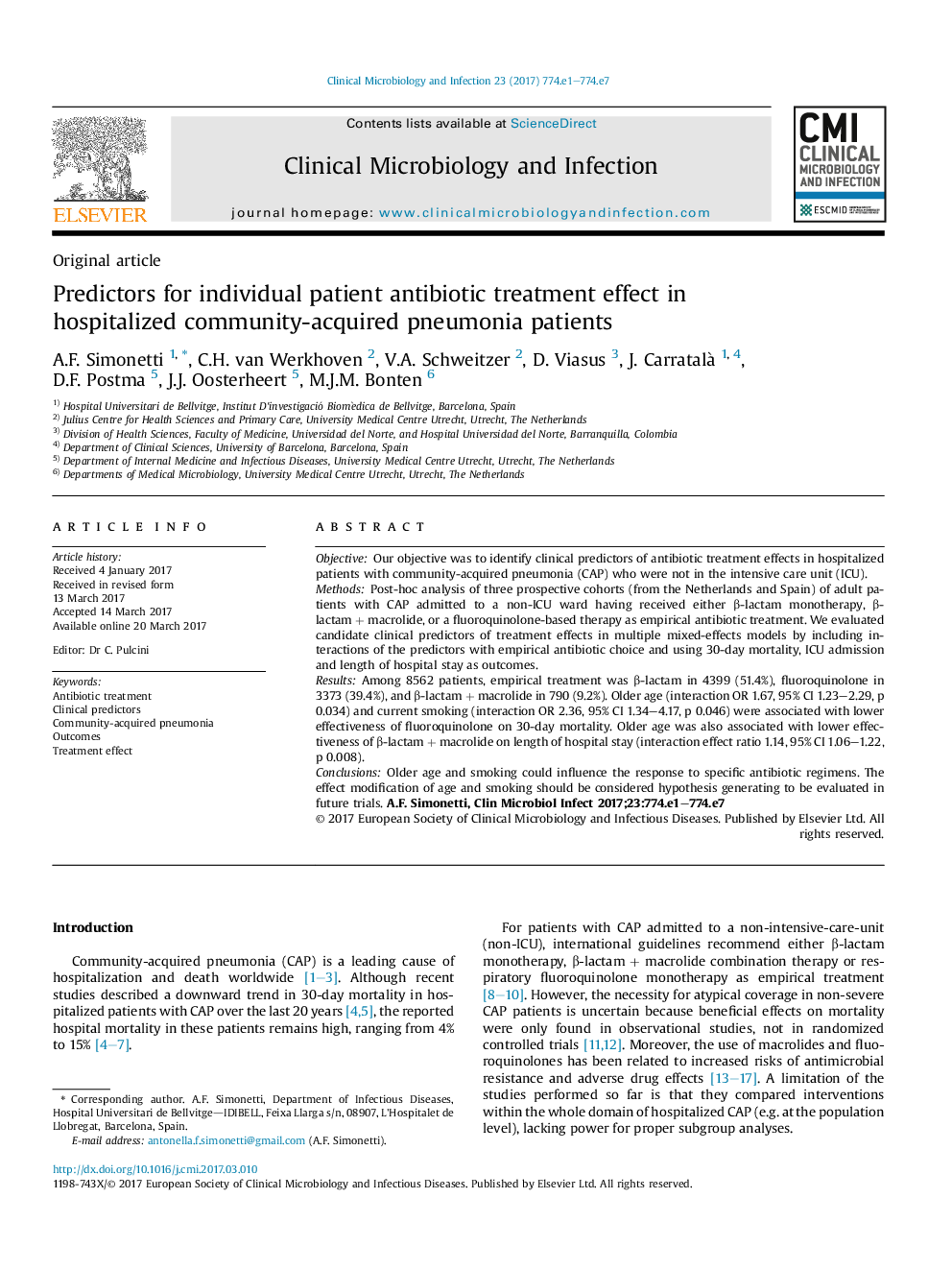| Article ID | Journal | Published Year | Pages | File Type |
|---|---|---|---|---|
| 5671590 | Clinical Microbiology and Infection | 2017 | 7 Pages |
ObjectiveOur objective was to identify clinical predictors of antibiotic treatment effects in hospitalized patients with community-acquired pneumonia (CAP) who were not in the intensive care unit (ICU).MethodsPost-hoc analysis of three prospective cohorts (from the Netherlands and Spain) of adult patients with CAP admitted to a non-ICU ward having received either β-lactam monotherapy, β-lactam + macrolide, or a fluoroquinolone-based therapy as empirical antibiotic treatment. We evaluated candidate clinical predictors of treatment effects in multiple mixed-effects models by including interactions of the predictors with empirical antibiotic choice and using 30-day mortality, ICU admission and length of hospital stay as outcomes.ResultsAmong 8562 patients, empirical treatment was β-lactam in 4399 (51.4%), fluoroquinolone in 3373 (39.4%), and β-lactam + macrolide in 790 (9.2%). Older age (interaction OR 1.67, 95% CI 1.23-2.29, p 0.034) and current smoking (interaction OR 2.36, 95% CI 1.34-4.17, p 0.046) were associated with lower effectiveness of fluoroquinolone on 30-day mortality. Older age was also associated with lower effectiveness of β-lactam + macrolide on length of hospital stay (interaction effect ratio 1.14, 95% CI 1.06-1.22, p 0.008).ConclusionsOlder age and smoking could influence the response to specific antibiotic regimens. The effect modification of age and smoking should be considered hypothesis generating to be evaluated in future trials.
